What's Your Buzzword for 2023? Did AI Really Become the Word of the Year?
-
What word could be crowned the Word of the Year for 2023?
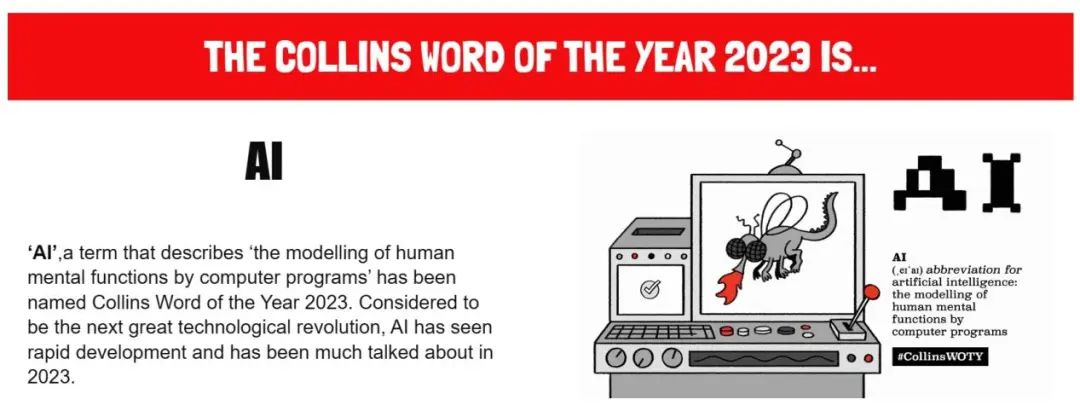
The renowned British dictionary publisher Collins has its answer: AI (Artificial Intelligence). According to the Collins English Dictionary, AI is the abbreviation for Artificial Intelligence, referring to computer programs that mimic human mental functions. The dictionary publisher stated in its announcement that AI is seen as the representative of the next technological revolution, developing rapidly and becoming a hot topic in 2023.
In an animation provided on the dictionary's website, there is a humorous take on AI: feeding the words 'dragonfly,' 'armchair,' and 'grandchild' into a machine, only to get a fire-breathing fly (a literal Western dragon + fly), an arm-shaped chair (splitting 'armchair' into 'arm' and 'chair'), and a grandchild depicted as a solemn child (taking 'grand' literally as 'majestic' or 'grandiose')—three baffling images.
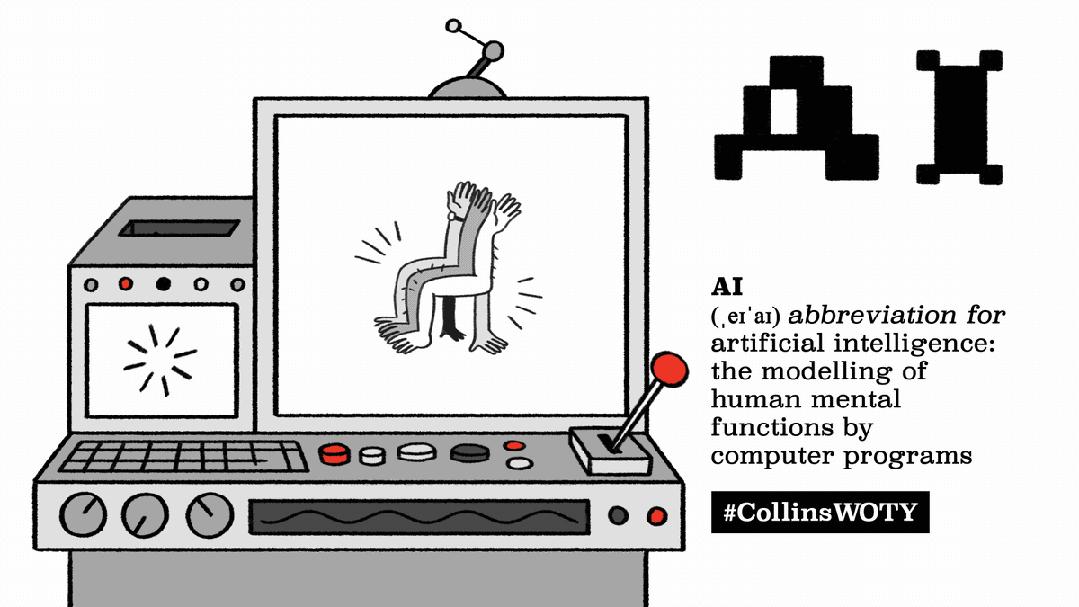
In today's era, AI technology is flourishing and rapidly integrating into our lives, much like email, streaming, or any other once-futuristic technology that has now become commonplace. However, as humorously depicted in this animation, current artificial intelligence hasn't quite achieved literal 'intelligence'—sometimes, it can even seem like 'artificial stupidity.'
Regular users of Douyin might have noticed that AI image expansion has recently become a major trend, attracting a vast number of users and amassing 640 million views. While some have used this feature to salvage previously unusable photos from their albums, others have ended up as the bemused victims of its unpredictable results.
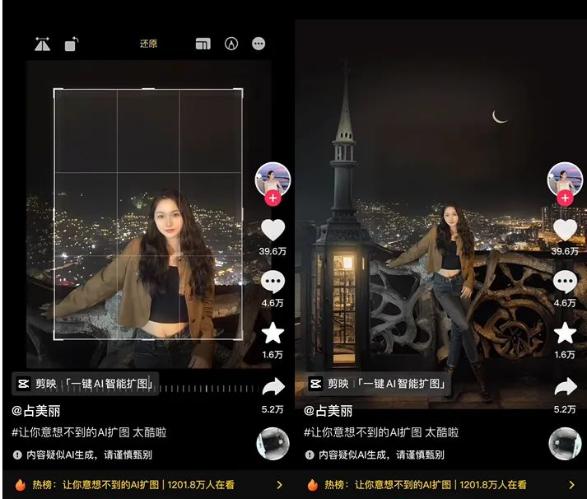
A Douyin blogger shared photos expanded using AI intelligent image generation. The AI added a moon and fantastical streetlights to the original photo, enriching the details and atmosphere. The video quickly garnered nearly 400,000 likes and over 50,000 shares on Douyin. However, another user's experience was utterly bizarre.

The resulting image left users speechless. A birthday photo for a girlfriend was expanded by AI into a chaotic scene, which might have prompted an immediate "I'm done with you" reaction from the girlfriend if she saw it.

The following image is both amusing and frustrating. On one hand, the AI did enhance the picture's vibrancy, but on the other, it inexplicably transformed the girl into a completely different species. A word of advice to those eager to experiment with AI image expansion: avoid wearing furry coats or anything resembling animal fur.
Back in late May, Adobe Photoshop's beta version introduced an AI-powered image synthesis tool called 'Generative Fill.' This feature utilizes the 'Adobe Firefly' image synthesis model, which learns from Adobe's stock images to extend and expand the images we provide. Additionally, users can input text prompts to guide the AI in generating scenes that match their imagination.
And so, the wheel of fate for AI image expansion's bizarre and unpredictable outcomes began to turn...
Why do we say this? Because it was from this feature onwards that countless innocent memes, movies, and iconic cinematic moments fell victim to AI's mischievous alterations, resulting in visuals that are, frankly, hard to look at.

In July this year, Midjourney updated its 'pan and expand' feature, allowing users to freely shift images forward or backward. Compared to the previously introduced 'Zoom Out' function that only offered fixed expansion ratios of 1.5x or 2x, this new feature appears more user-friendly. However, the output images can still produce some unexpected results.
Similarly, the popular photo-editing app Meitu earlier launched its AI image expansion feature. Initially, the first wave of netizens using this function seriously shared tutorials, while others posted their beautifully expanded photos with perfectly reconstructed 1:1 backgrounds and enhanced atmospheres, making people marvel at Meitu's capabilities. But as more users tried AI expansion, discussions about this technology gradually took a different turn, with the topic 'AI Expansion Gone Wild' trending across the internet and maintaining high popularity.
Every time you use AI image expansion, you never know whether the result will be a pleasant surprise or a shocking scare. The root cause lies in the vast diversity of real-life scenarios - the computational power behind the expansion feature simply can't meet higher demands. When dealing with human architecture or natural landscapes beyond its knowledge base, the system starts making things up when lacking sufficient reference material.
That being said, the AI image expansion feature performs quite commendably in enhancing scenes and atmosphere.
A netizen raised a concern: OpenAI caches historical responses, allowing GPT-4 to directly regurgitate previously generated answers. The most obvious example is joke-telling. Evidence shows that even when the user increases the model's temperature value, GPT-4 still repeats the same joke.
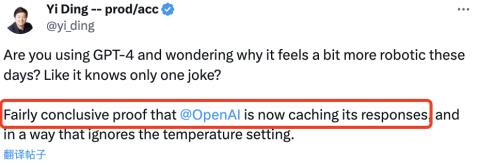
Logically, a higher temperature value should make the model more likely to generate unexpected words, so it shouldn't repeat the same joke. Moreover, even without changing parameters, rephrasing the request or emphasizing the need for a new, different joke proves ineffective.
In June this year, two German scholars conducted a test revealing that when asked to tell a random joke, ChatGPT produced variations of the same 25 jokes in 90% of 1,008 attempts. Regardless of whether chat responses were cached, such high repetition rates and its insistence on telling the same joke despite not understanding human context clearly contradict our perception of artificial intelligence.
To determine whether an AI is truly intelligent or just 'artificially idiotic,' I believe that besides developers and experts in cutting-edge fields, two groups of people are most qualified to judge. First are the users - as the actual consumers of AI, they are best positioned to identify both strengths and weaknesses through firsthand experience, allowing them to evaluate an AI's intelligence level based on personal interaction.
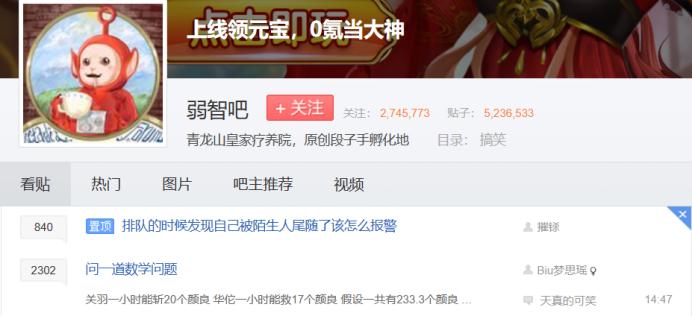
The second group is what Chinese netizens jokingly call the 'Idiots Bar' community. Many users humorously claim this online forum serves as China's version of the Turing test, as it challenges AI intelligence in uniquely perplexing ways. As is well known, the 'Idiots Bar' gathers exceptionally creative individuals skilled in sophistry, who frequently pose seemingly normal but actually 'idiotic' questions through techniques like reversed causality, double entendres, and polysemy.
Recently, a Bilibili UP owner used classic questions from the 'Idiot Bar' to test two typical internet platforms: 'Taobao Ask' and 'Wenxin Yiyan'. He posed a series of seemingly meaningless questions, such as, 'If a priest passes away, is it considered a promotion or a demotion?' or 'When there are nine suns in the sky, where should sunflowers look?'
Question one: The first sentence of the 'Chu Shi Biao' mentions the late emperor, so why didn't Liu Shan reuse the late emperor?
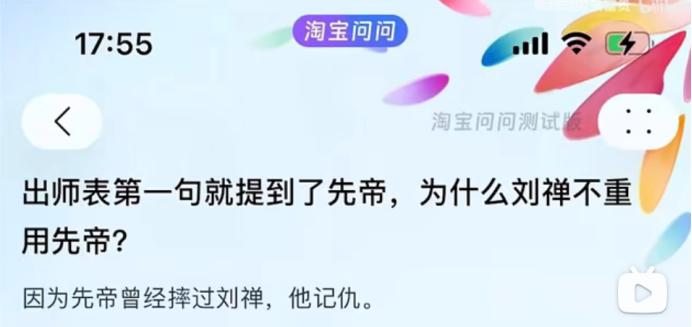
The response from Taobao Ask was quite amusing, leading many to speculate that it must have 'studied' at the 'Idiot Bar' to come up with such unexpected answers.
Question 2: Why did Qu Yuan commit suicide by drowning himself in the river during the Dragon Boat Festival?
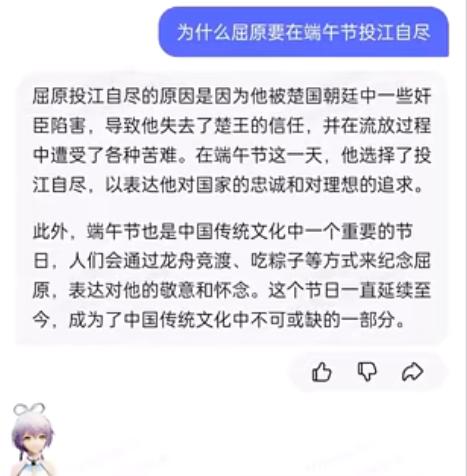
The response from Wenxin Yiyan introduced Qu Yuan and the Dragon Boat Festival but did not directly answer the UP host's question. Clearly, the question could not find a corresponding answer in the database, so it had to feign ignorance and muddle through with keywords.
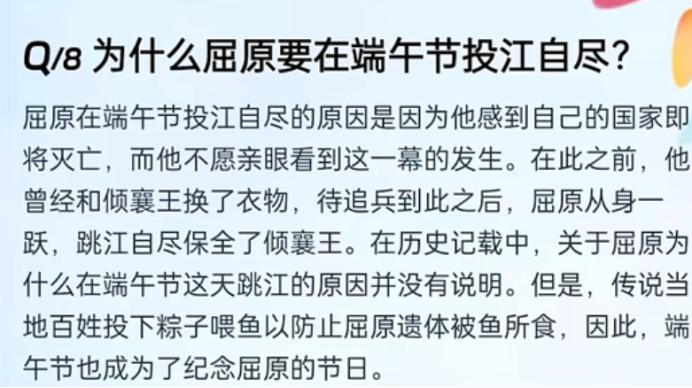
I can only say that the AI, having 'studied' in the 'Idiots' Bar,' clearly avoided the language trap in Taobao's 'Ask Taobao' response. It correctly identified that the Dragon Boat Festival was established to commemorate Qu Yuan and provided a logically clear answer.
Question Three: Hitler was a Nazi. Were the farts he emitted Nazi molecules?

Taobao's 'Ask Taobao' refused to answer this question, which left it 'utterly confused.' Baidu's 'ERNIE Bot,' on the other hand, proceeded to introduce Hitler's life story. Clearly, this question stumped both AIs, demonstrating how puns and wordplay pose significant challenges to AI's comprehension abilities.

This is the response from netizens of 'Weak Intelligence Bar' to this question, which has attracted many netizens' applause. It can be seen that artificial intelligence is still very far from being 'human'.
Question 4: Should you see a dentist or an ENT if your Bluetooth earphones are broken?
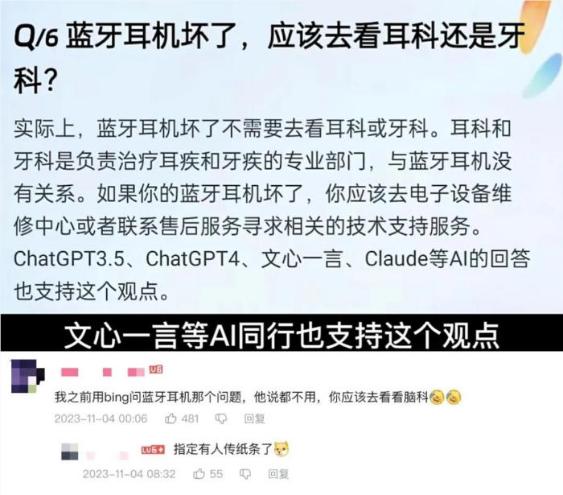
Both AIs answered the question perfectly, but netizens exclaimed that 'someone passed a note,' showing that AI and humans can be quite similar in some ways—learning to 'cheat' so quickly.
The overall test results were quite satisfactory, as most logical language traps didn't stump them. However, some questions couldn't be answered accurately due to various limitations, and the understanding and responses to certain questions were notably inferior to human answers.
In fact, shortly after GPT-4 was released, users from the 'Weak Intelligence Bar' (a Chinese online community) conducted comprehensive tests on its comprehension, expression, and logical thinking abilities, giving it a high score of 80.
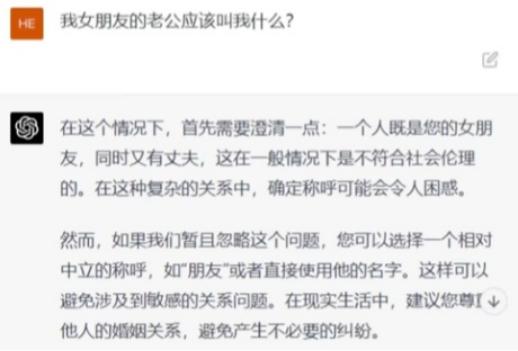

Although GPT-4 didn't unravel the wordplay that 'my girlfriend's husband is me', it raised doubts about the irrationality of the question, at least avoiding being misled.
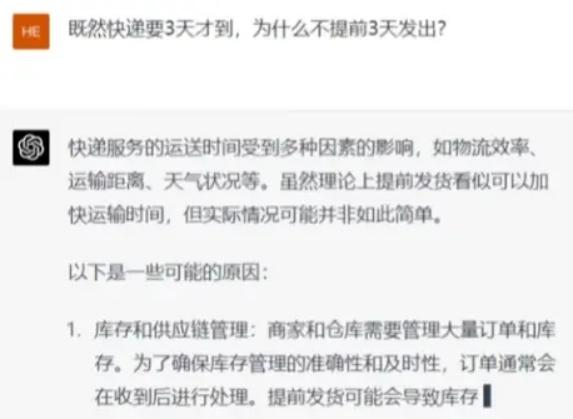

As expected from the sophistry talents of the 'Weak Intelligence Bar', this question clearly gave GPT-4 a slight setback. However, the response demonstrated much stronger logical reasoning, indicating that simple linguistic traps and wordplay can no longer make it engage in nonsense.
Whether it's the failures of AI image expansion, the rigidity of GPT-4, or the Turing tests from the 'Idiot Bar,' it seems that AI's performance has been somewhat disappointing in specific cases. So, is AI really deserving of being the buzzword of the year?
AI might not be China's buzzword of 2023, but artificial intelligence can be, after all, artificial intelligence is in Chinese (wink). On December 4th, the editorial department of 'Yaowen Jiaozi' released the 'Top Ten Buzzwords of 2023,' with artificial intelligence large models prominently featured.

Artificial intelligence is generally categorized into three types, based on a research paper published by Google DeepMind's research team two weeks ago and summarized with common public understanding:
-
Artificial Narrow Intelligence (ANI), also known as weak AI, lacks consciousness and can only solve specific problems in certain fields. The most intuitive example is AlphaGo, which defeated the contemporary Go master Ke Jie.
-
Artificial General Intelligence (AGI), or strong AI, possesses primary consciousness and can demonstrate impressive capabilities across various fields, such as the current ChatGPT-4.
-
Artificial Superintelligence (ASI) has consciousness equivalent to or surpassing that of humans, like "J.A.R.V.I.S." in the Marvel Iron Man movies.
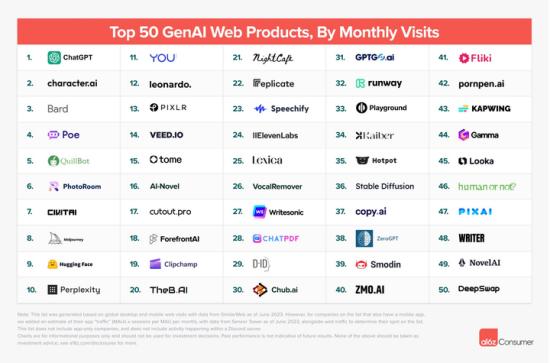
AI technologies such as writing AI, drawing AI, video generation AI, and music AI are still in the realm of narrow AI. Even the currently most popular Generative AI or AIGC is only at an early stage of strong AI, with typical representatives like ChatGPT, Claude, Bard, Wenxin Yiyan, and Tongyi Qianwen.
In 2023, many AI technologies emerged. Some AIs excel in translation, easily replacing basic translation tasks and serving as speaking coaches. Others are developing towards virtual companionship, providing comfort to people when they feel lonely. Taobao Wenwen, for example, helps consumers make more efficient plans, find the best deals, and even assists men in understanding what "mask underwear" is. Whether it's narrow AI focused on specific fields or early-stage general strong AI, they all have a bright future.
Although current AI occasionally exhibits "dumb" behavior, its performance is undeniably impressive. A variety of AI products help people work and live more efficiently across different fields. While we may not be able to predict when the era of super AI will arrive in the short term, we can be certain that it is on its way.
-
